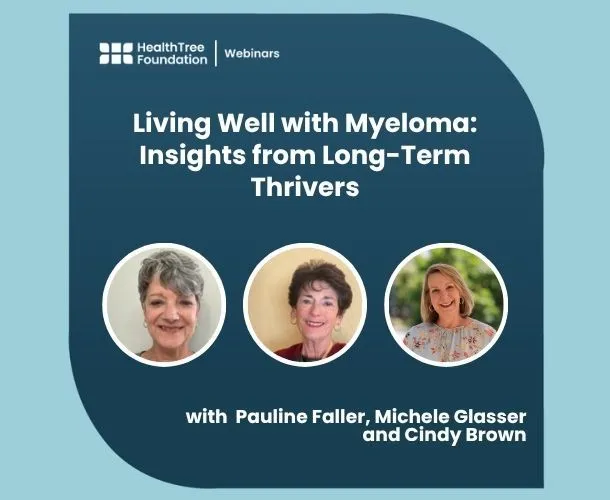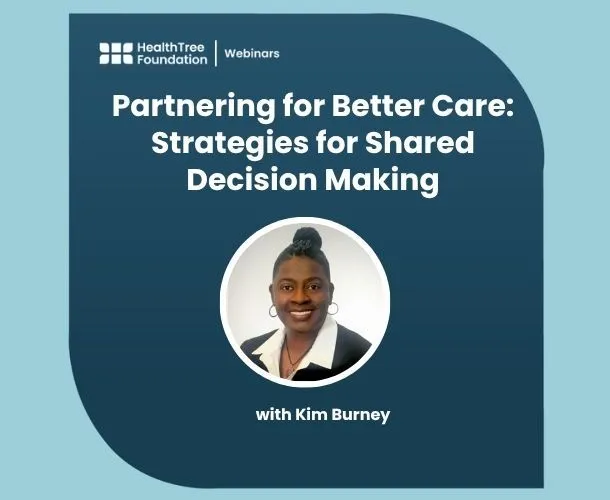ASH 2020: The Race for a Multiple Myeloma Bi-Specific Antibody

The race is on to develop new bispecific antibodies for multiple myeloma. Although this data is very early and based on Phase I clinical trials, it's helpful to get our arms around the bispecific landscape so we can watch the progress in the coming years.
Bispecific antibodies may prove to be extremely important for myeloma patients who have relapsed after proteasome inhibitors, immunomodulatory drugs (IMiDs), a steroid and a monoclonal antibody. Patients who are quad refractory have an average survival of 9.2 months. Moreover, once patients relapse past two proteasome inhibitors, two IMiDs, chemotherapy and a steroid, they are considered to be penta-refractory with an average survival of 5.6 months. Clearly, patients need additional options and this class of drugs looks promising.
They work by connecting T cells and tumor cells to kill cancerous cells.
Talquetamab
Ajai Chari, MD of Mount Sinai Hospital discussed talquetamab, the only bispecific antibody targeting GPRC5D, which is found most commonly on plasma cells and hair follicles. It is highly expressed on myeloma cells and associated with high-risk myeloma factors. It may be an excellent choice for relapsed patients who may ultimately want a BCMA CAR T therapy but can't wait and need bridging therapy in the meantime. Using this for highly relapsed patients could be a smart move, because it looks to be quite effective and would not rule out future BCMA-directed therapy.
- Target: GPRC5D and CD3
- Administration: Subcutaneous and IV
- Company: Janssen
- Phase: I
- Number of patients in the study: 157
- Safety: The safety profile was low at lower doses but with increased dosing came additional side effects such as skin rash, back pain and oral toxicity in 36% of patients. Only low grade cytokine release syndrome (CRS) and neurotoxicities were seen.
- Efficacy: Median time to response was 1 month with an overall response rate of 69% (with a mean follow-up of 3.7 months). Overall response rate in the IV arm was 67% and in the subq arm was 66%. Six out of 9 triple class refractory patients responded and 2 out of 2 penta-refractory patients responded, showing that even highly relapsed patients could respond to this antibody. In the 8 patients with response over 12 months, 7 had over a complete response and 3 have responded over 2 years. Responses were durable and continued over time. In general, the subq dosing could make administration convenient and potentially less frequent in dosing.
Cevostamab
Adam Cohen, MD, PhD of the University of Pennsylvania presented research on cevostamab, which targets FcRH5, a surface cell receptor on B cells and expressed 100% of the time on myeloma cells. This is an attractive target because of its presence on myeloma cells and, like talquetamab, could be helpful by targeting something other than BCMA. Patients with prior BCMA CAR T or BiTE therapies were allowed into this trial and these individuals had a 63% overall response rate. This gives patients who have relapsed after these therapies continued hope.
- Target: FcRH5 and CD3
- Administration: IV with step-up dosing
- Company: Genentech
- Phase: I
- Number of patients in the study: 53. The study allowed patients who had had prior BCMA CAR T or bispecific therapies.
- Safety: 15-25% of patients had over grade 3 blood count concerns (such as anemia and low platelets). 76% had CRS but only one patient had over Grade 3 CRS, which was reversible.
- Efficacy: Overall response rate in the middle dose was 53% and the mean time to seeing the first or best response was around 30 days. The patients' measurable level of FcRH5 didn't correspond with responses levels. Even for penta-refractory patients, the overall response rate was 41%, which is impressive. Eight patients had responses longer than 8 months. Six out of 7 patients who had a complete response (CR) or stringent complete response (sCR) were MRD negative.
REGN5458
Regeneron is developing a new bi-specific antibody targeting BCMA called REGN5458, Deepu Madduri, MD of Mount Sinai Hospital shared data.
- Target: BCMA and CD3
- Administration: IV in weekly doses and then every two weeks
- Company: Regeneron
- Phase: I/II
- Number of patients in the study: 49 (all were triple class refractory and 29 were penta-refractory), including non-secretory patients.
- Safety: One patient had a dose limiting toxicity of a kidney injury and has since recovered and another patient had a Grade 3 elevated ALT/AST level that resolved with supportive care. There were no Grade 3 or higher neurological toxicities or CRS. Quality of life improved after 4 weeks and was maintained on an ongoing basis.
- Efficacy: In the Phase I/II does-escalation study, researchers noted a 6-month median duration of response. 37% of responders maintained response for over 8 months. Responses were seen within the first 4 weeks of treatment. Interestingly, although the overall response rate was the best at the highest dose, none of the higher dose patients achieved a complete response (CR) or stringent complete response (sCR). However, as you can see in the chart below, patients at lower doses did achieve sCR and CR. Levels of BCMA didn't influence response levels.
| Dose | ORR | sCR | CR | VGPR |
| 96 mg | 63% | 0 | 0 | 62.5% |
| 24 mg or 48 mg | 41% | 11.8% | 5.9% | 23.5% |
| 3 mg, 6 mg or 12 mg | 29% | 16.7% | 4.2% | 4.2% |
TNB-383B
Cesar Rodriguez, MD of Wake Forest University shared TNB-383B, a BCMA-directed, fully humanized bispecific antibody. It has three potential advantages: 1) a unique construct to reduce CRS, 2) dual binding targets for more durable impact that does not bind to soluble BCMA and, 3) silencing of the IgG4 backbone to prevent non-essential T cells from being activated.
- Target: BCMA and CD3
- Administration: IV. The first dose is the only hospitalized dose and only low-dose dex was provided as pre-medication. Subq administration has been discussed but is not currently planned.
- Company: Abbvie
- Phase: I. The Phase II is expected within a year.
- Number of patients in the study: 58 (all were triple class refractory and 20 were penta class refractory) 20% of study patients were black.
- Safety: Infection over grade 3 was the most common side effect. CRS affected 45% of patients but didn't increase with dose increases. Lower blood count side effects were seen in 20% of patients. Only 5 patients received tociluzumab and none received dex.
- Efficacy: There was an 80% overall response rate with 13.3% of patients reaching a complete response in the highest dose category (40-60 mg).
AMG 701 FIH
Simon Harrison, MBBS MRCP, PhD, FRCPath, FRACP of the Peter MacCallum Cancer Centre and Royal Melbourne Hospital presented the first in human study of AMG 701, a BCMA-targeting half-life extended BiTE®. Amgen first started on development of AMG 420 and presented impressive results two years ago at ASH, but they listened to patients who suggested the continuous administration via fanny pack was not ideal and they pivoted development to AMG 701.
- Target: BCMA and CD3
- Administration: IV with a large spread of dose levels from .015 mg - 18 mg.
- Company: Amgen
- Phase: I
- Number of patients in the study: 85 began the study with 21 continuing. (62% were triple class refractory and 25% had extramedullary disease).
- Safety: The majority of patients experienced only grade 1-2 CRS. All CRS over grade 3 was reversible with tocilizumab or steroids and lasted an average of 2 days.
- Efficacy: There was an 83% overall response rate in the most recent evaluable group and an overall 26% response rate for all combined dose levels. Interestingly, one patient on the study relapsing after 13 lines of therapy including a stem transplant as bridging therapy to this study responded with a stringent complete response for over 26 months. Six out of seven patients tested for MRD were MRD negative.
PF-3135
Alexander Lesokhin, MD of Memorial Sloan Kettering Cancer Center shared a new humanized bispecific antibody for subq administration in order to reduce cytokine release syndrome (CRS).
- Target: BCMA and CD3
- Administration: Subq
- Company: Pfizer
- Phase: I
- Number of patients in the study: 18 with 4 patients already having received prior BCMA antibody drug conjugate or CAR T therapy.
- Safety: CRS was reported in 61% of patients but none grade 3 or above. The most common grade 3-4 side effects were anemia (44%), lowered blood counts and bone pain (11%). The CRS began within the first 2 days of treatment with a mean duration of 2 days.
- Efficacy: The overall response rate was 33% for all doses and was 75% in the top 2 dose levels.
CC-93269
BMS is developing a bispecific antibody for multiple myeloma, however no data at ASH 2020 was included for this therapy.
This review is based on the recent ASH 2020 oral and poster sessions which focused on bispecific antibody therapies. In time, we should know more about duration of impact and we'll know more about the leaders of the pack.
The race is on to develop new bispecific antibodies for multiple myeloma. Although this data is very early and based on Phase I clinical trials, it's helpful to get our arms around the bispecific landscape so we can watch the progress in the coming years.
Bispecific antibodies may prove to be extremely important for myeloma patients who have relapsed after proteasome inhibitors, immunomodulatory drugs (IMiDs), a steroid and a monoclonal antibody. Patients who are quad refractory have an average survival of 9.2 months. Moreover, once patients relapse past two proteasome inhibitors, two IMiDs, chemotherapy and a steroid, they are considered to be penta-refractory with an average survival of 5.6 months. Clearly, patients need additional options and this class of drugs looks promising.
They work by connecting T cells and tumor cells to kill cancerous cells.
Talquetamab
Ajai Chari, MD of Mount Sinai Hospital discussed talquetamab, the only bispecific antibody targeting GPRC5D, which is found most commonly on plasma cells and hair follicles. It is highly expressed on myeloma cells and associated with high-risk myeloma factors. It may be an excellent choice for relapsed patients who may ultimately want a BCMA CAR T therapy but can't wait and need bridging therapy in the meantime. Using this for highly relapsed patients could be a smart move, because it looks to be quite effective and would not rule out future BCMA-directed therapy.
- Target: GPRC5D and CD3
- Administration: Subcutaneous and IV
- Company: Janssen
- Phase: I
- Number of patients in the study: 157
- Safety: The safety profile was low at lower doses but with increased dosing came additional side effects such as skin rash, back pain and oral toxicity in 36% of patients. Only low grade cytokine release syndrome (CRS) and neurotoxicities were seen.
- Efficacy: Median time to response was 1 month with an overall response rate of 69% (with a mean follow-up of 3.7 months). Overall response rate in the IV arm was 67% and in the subq arm was 66%. Six out of 9 triple class refractory patients responded and 2 out of 2 penta-refractory patients responded, showing that even highly relapsed patients could respond to this antibody. In the 8 patients with response over 12 months, 7 had over a complete response and 3 have responded over 2 years. Responses were durable and continued over time. In general, the subq dosing could make administration convenient and potentially less frequent in dosing.
Cevostamab
Adam Cohen, MD, PhD of the University of Pennsylvania presented research on cevostamab, which targets FcRH5, a surface cell receptor on B cells and expressed 100% of the time on myeloma cells. This is an attractive target because of its presence on myeloma cells and, like talquetamab, could be helpful by targeting something other than BCMA. Patients with prior BCMA CAR T or BiTE therapies were allowed into this trial and these individuals had a 63% overall response rate. This gives patients who have relapsed after these therapies continued hope.
- Target: FcRH5 and CD3
- Administration: IV with step-up dosing
- Company: Genentech
- Phase: I
- Number of patients in the study: 53. The study allowed patients who had had prior BCMA CAR T or bispecific therapies.
- Safety: 15-25% of patients had over grade 3 blood count concerns (such as anemia and low platelets). 76% had CRS but only one patient had over Grade 3 CRS, which was reversible.
- Efficacy: Overall response rate in the middle dose was 53% and the mean time to seeing the first or best response was around 30 days. The patients' measurable level of FcRH5 didn't correspond with responses levels. Even for penta-refractory patients, the overall response rate was 41%, which is impressive. Eight patients had responses longer than 8 months. Six out of 7 patients who had a complete response (CR) or stringent complete response (sCR) were MRD negative.
REGN5458
Regeneron is developing a new bi-specific antibody targeting BCMA called REGN5458, Deepu Madduri, MD of Mount Sinai Hospital shared data.
- Target: BCMA and CD3
- Administration: IV in weekly doses and then every two weeks
- Company: Regeneron
- Phase: I/II
- Number of patients in the study: 49 (all were triple class refractory and 29 were penta-refractory), including non-secretory patients.
- Safety: One patient had a dose limiting toxicity of a kidney injury and has since recovered and another patient had a Grade 3 elevated ALT/AST level that resolved with supportive care. There were no Grade 3 or higher neurological toxicities or CRS. Quality of life improved after 4 weeks and was maintained on an ongoing basis.
- Efficacy: In the Phase I/II does-escalation study, researchers noted a 6-month median duration of response. 37% of responders maintained response for over 8 months. Responses were seen within the first 4 weeks of treatment. Interestingly, although the overall response rate was the best at the highest dose, none of the higher dose patients achieved a complete response (CR) or stringent complete response (sCR). However, as you can see in the chart below, patients at lower doses did achieve sCR and CR. Levels of BCMA didn't influence response levels.
| Dose | ORR | sCR | CR | VGPR |
| 96 mg | 63% | 0 | 0 | 62.5% |
| 24 mg or 48 mg | 41% | 11.8% | 5.9% | 23.5% |
| 3 mg, 6 mg or 12 mg | 29% | 16.7% | 4.2% | 4.2% |
TNB-383B
Cesar Rodriguez, MD of Wake Forest University shared TNB-383B, a BCMA-directed, fully humanized bispecific antibody. It has three potential advantages: 1) a unique construct to reduce CRS, 2) dual binding targets for more durable impact that does not bind to soluble BCMA and, 3) silencing of the IgG4 backbone to prevent non-essential T cells from being activated.
- Target: BCMA and CD3
- Administration: IV. The first dose is the only hospitalized dose and only low-dose dex was provided as pre-medication. Subq administration has been discussed but is not currently planned.
- Company: Abbvie
- Phase: I. The Phase II is expected within a year.
- Number of patients in the study: 58 (all were triple class refractory and 20 were penta class refractory) 20% of study patients were black.
- Safety: Infection over grade 3 was the most common side effect. CRS affected 45% of patients but didn't increase with dose increases. Lower blood count side effects were seen in 20% of patients. Only 5 patients received tociluzumab and none received dex.
- Efficacy: There was an 80% overall response rate with 13.3% of patients reaching a complete response in the highest dose category (40-60 mg).
AMG 701 FIH
Simon Harrison, MBBS MRCP, PhD, FRCPath, FRACP of the Peter MacCallum Cancer Centre and Royal Melbourne Hospital presented the first in human study of AMG 701, a BCMA-targeting half-life extended BiTE®. Amgen first started on development of AMG 420 and presented impressive results two years ago at ASH, but they listened to patients who suggested the continuous administration via fanny pack was not ideal and they pivoted development to AMG 701.
- Target: BCMA and CD3
- Administration: IV with a large spread of dose levels from .015 mg - 18 mg.
- Company: Amgen
- Phase: I
- Number of patients in the study: 85 began the study with 21 continuing. (62% were triple class refractory and 25% had extramedullary disease).
- Safety: The majority of patients experienced only grade 1-2 CRS. All CRS over grade 3 was reversible with tocilizumab or steroids and lasted an average of 2 days.
- Efficacy: There was an 83% overall response rate in the most recent evaluable group and an overall 26% response rate for all combined dose levels. Interestingly, one patient on the study relapsing after 13 lines of therapy including a stem transplant as bridging therapy to this study responded with a stringent complete response for over 26 months. Six out of seven patients tested for MRD were MRD negative.
PF-3135
Alexander Lesokhin, MD of Memorial Sloan Kettering Cancer Center shared a new humanized bispecific antibody for subq administration in order to reduce cytokine release syndrome (CRS).
- Target: BCMA and CD3
- Administration: Subq
- Company: Pfizer
- Phase: I
- Number of patients in the study: 18 with 4 patients already having received prior BCMA antibody drug conjugate or CAR T therapy.
- Safety: CRS was reported in 61% of patients but none grade 3 or above. The most common grade 3-4 side effects were anemia (44%), lowered blood counts and bone pain (11%). The CRS began within the first 2 days of treatment with a mean duration of 2 days.
- Efficacy: The overall response rate was 33% for all doses and was 75% in the top 2 dose levels.
CC-93269
BMS is developing a bispecific antibody for multiple myeloma, however no data at ASH 2020 was included for this therapy.
This review is based on the recent ASH 2020 oral and poster sessions which focused on bispecific antibody therapies. In time, we should know more about duration of impact and we'll know more about the leaders of the pack.
about the author
Jennifer Ahlstrom
Myeloma survivor, patient advocate, wife, mom of 6. Believer that patients can contribute to cures by joining HealthTree Cure Hub and joining clinical research. Founder and CEO of HealthTree Foundation.
More on Conferences
Trending Articles




Get the Latest Multiple Myeloma Updates, Delivered to You.
By subscribing to the HealthTree newsletter, you'll receive the latest research, treatment updates, and expert insights to help you navigate your health.
Together we care.
Together we cure.
3x Faster.












